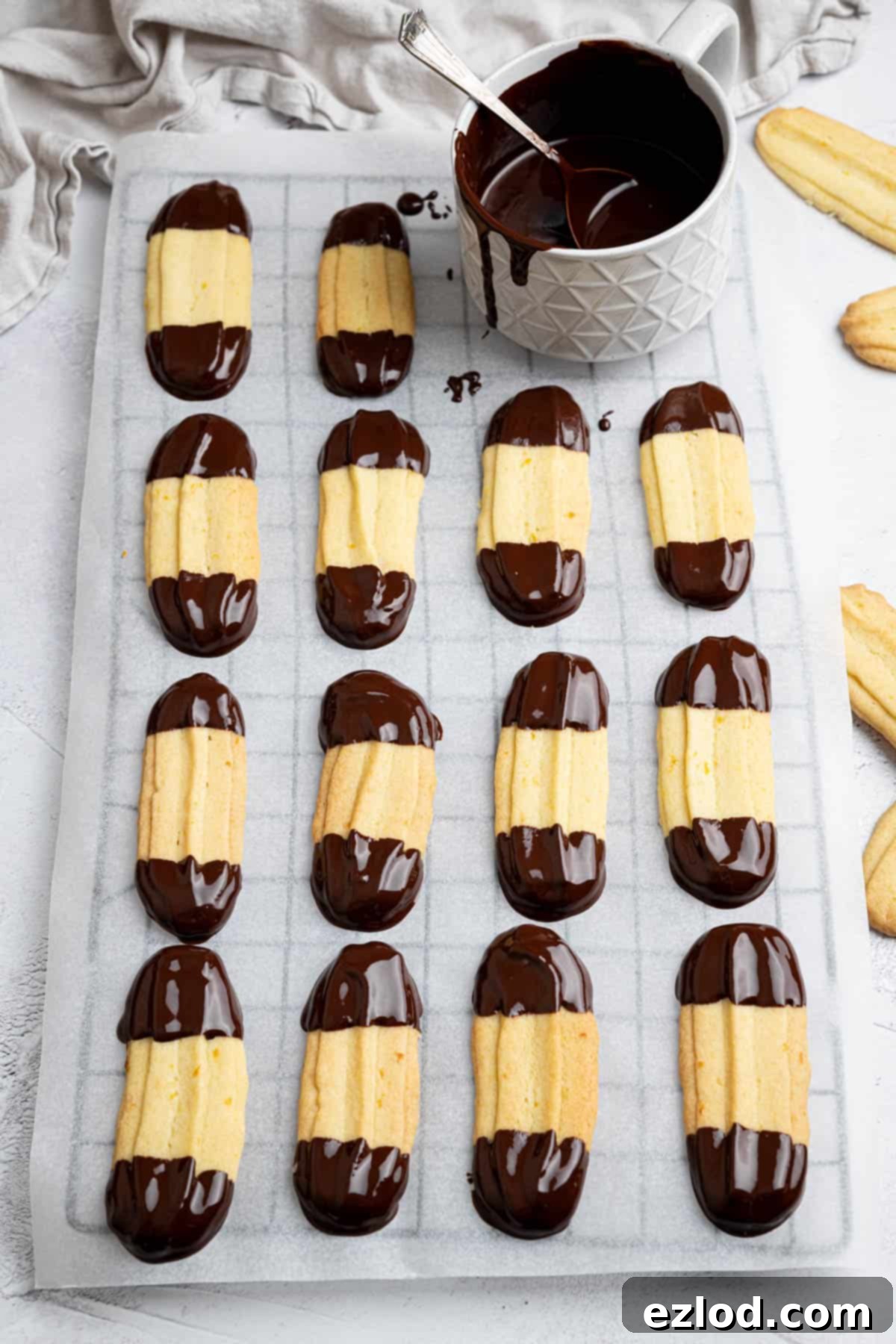Decadent Vegan Chocolate Orange Viennese Fingers: A Melt-in-Your-Mouth Recipe
Prepare to be enchanted by these utterly delightful vegan chocolate orange Viennese fingers. These exquisite biscuits are a testament to the fact that plant-based baking can be just as, if not more, indulgent and satisfying than traditional recipes. Each finger boasts a rich, delicate, and wonderfully crumbly texture that truly melts in your mouth, leaving behind a blissful whisper of orange and vanilla.
Crafted from perfectly piped orange-infused shortbread, these elegant fingers are then lovingly dipped in luxurious dark chocolate. The result is a sophisticated treat that strikes the ideal balance of sweetness, making it an impeccable companion for your afternoon tea or a simply irresistible snack any time of day.
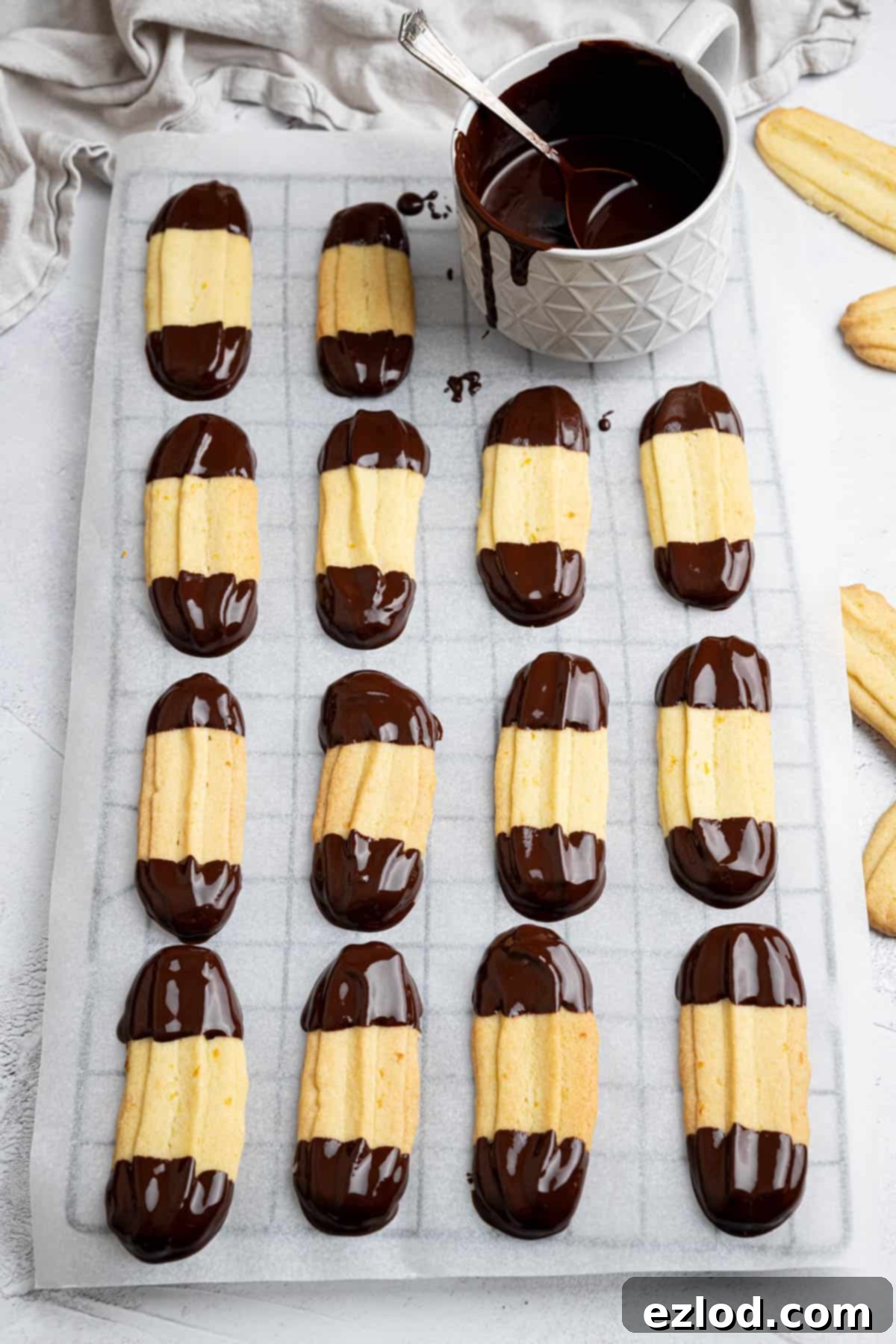
Viennese biscuits hold a special place in the hearts of cookie enthusiasts, and for good reason. Their distinctively delicate and exceptionally buttery character, coupled with an incredibly short texture, defines a truly melt-in-the-mouth experience. When you introduce a generous dip of rich chocolate, these classic cookies are elevated to an entirely new realm of deliciousness. Beyond their luxurious taste and texture, Viennese biscuits offer the charming opportunity to be piped into a variety of elegant shapes, making them as visually appealing as they are tasty. The best part? They come together surprisingly quickly, making them an accessible baking project even for busy schedules.
Our vegan chocolate orange Viennese fingers take this beloved classic and infuse it with the undeniably winning combination of chocolate and bright citrus. The interplay between the sweet, slightly bitter dark chocolate and the vibrant, zesty orange creates an unparalleled flavour profile that is both comforting and exciting. These biscuits are crafted to be rich and wonderfully crumbly, yet intentionally not overly sweet, ensuring a balanced indulgence. Whether presented as a sophisticated addition to an afternoon tea spread or enjoyed as a simple, elegant snack, these cookies are sure to impress. And despite their refined appearance, they are remarkably straightforward to prepare, proving that gourmet treats don’t have to be complicated.
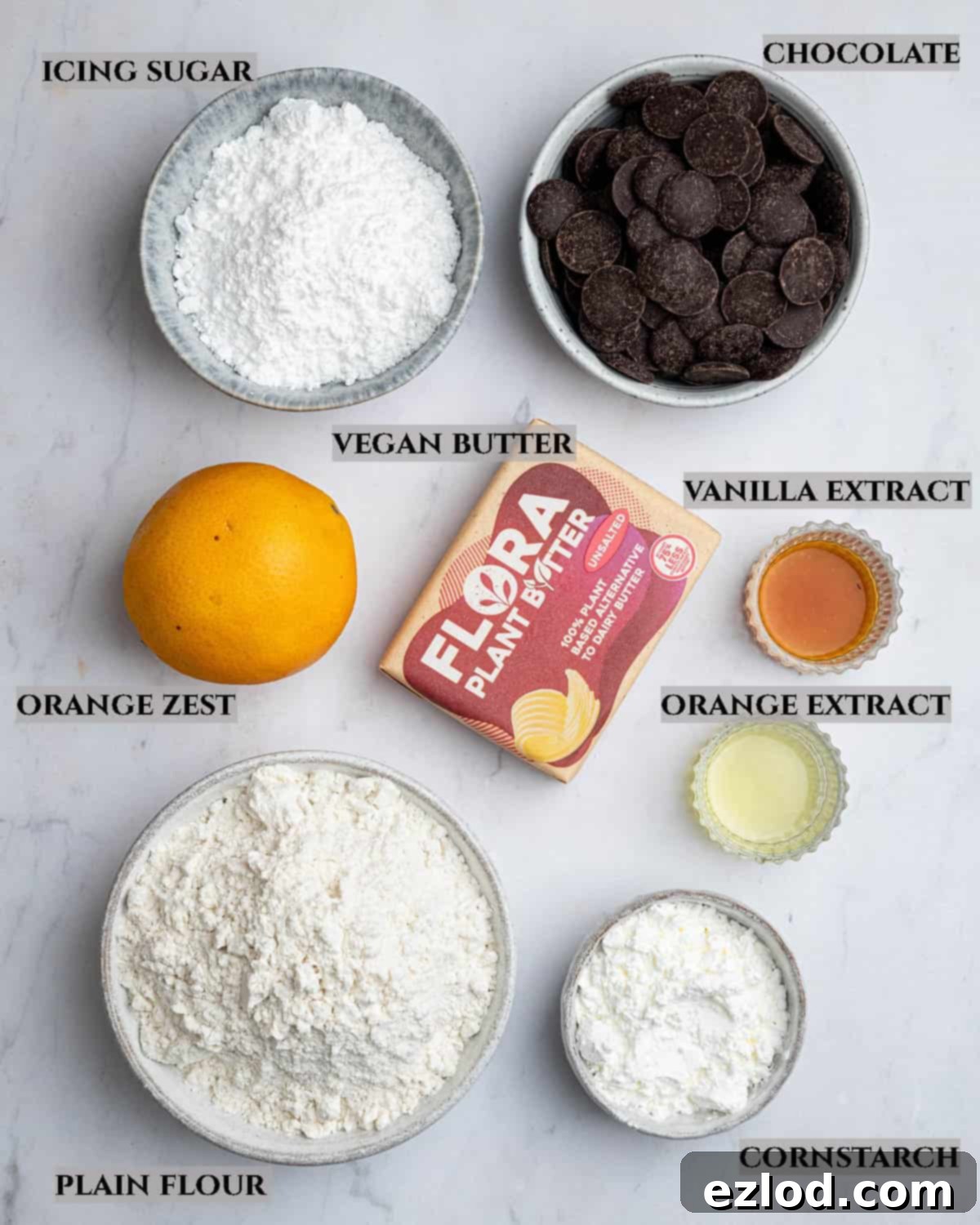
Key Ingredients for Perfect Vegan Viennese Fingers
Achieving the signature delicate texture of Viennese fingers hinges on using the right ingredients and understanding their roles. Here’s a closer look at what you’ll need and why specific choices matter for these vegan treats:
Vegan block butter: This is arguably the most critical ingredient for perfect Viennese fingers. For the love of truly exquisite baking, it is imperative to use a solid block butter or margarine, and absolutely not the spreadable kind typically found in tubs. Spreadable versions contain a higher water content and often have added oils to make them soft at fridge temperature, which can lead to a dough that is too soft to pipe effectively and results in tougher, less delicate biscuits. Block butter, designed for baking, provides the necessary fat content and firm consistency for that classic crumbly, melt-in-your-mouth texture. I highly recommend reputable brands such as Naturli Vegan Block or Flora Plant Butter for consistent, superior results.
Plain flour: Simple, regular plain (also known as all-purpose) flour is precisely what you need for this recipe. It provides the foundational structure for the biscuits without adding any leavening agents that might alter their delicate nature. While I haven’t personally experimented with gluten-free alternatives for this particular recipe, stick to standard plain flour for guaranteed success.
Cornflour (cornstarch): This seemingly small addition plays a monumental role in the texture of your Viennese fingers. Cornflour is the secret ingredient that contributes significantly to that coveted light, almost ethereal, melt-in-the-mouth quality. It tenderises the dough by interfering with gluten development, ensuring your biscuits are exquisitely short and crumbly. Please do not be tempted to swap it for any other type of flour or thickener; its specific properties are essential here.
Vanilla extract: Flavour is paramount, and a high-quality vanilla extract will truly shine through, enhancing the overall taste of your biscuits. Avoid imitation vanilla if possible, and opt for a pure extract for the best aromatic depth. If you want to go the extra mile, vanilla bean paste would be an absolutely incredible addition, offering visible flecks of vanilla bean and an even more intense flavour.
Icing (powdered) sugar: The choice of sugar is not merely about sweetness but also about texture. Using fine icing sugar (also known as powdered sugar) instead of coarser caster or granulated sugar is vital for achieving the light and smooth consistency characteristic of Viennese biscuits. Its fine particles dissolve easily and blend seamlessly into the dough, contributing to a wonderfully tender crumb. Substituting with other sugar types is not recommended as it will alter the biscuit’s delicate structure.
Orange: To infuse these biscuits with a bright and vibrant citrus flavour, I utilise a harmonious blend of finely grated orange zest and orange extract. The zest provides natural essential oils for an authentic, aromatic punch, while the extract boosts the flavour intensity. For those who crave an even more pronounced orange experience, consider dipping your fingers in an orange-flavoured dark chocolate. Alternatively, if you prefer the classic, unadorned Viennese flavour, simply omit the orange zest and extract entirely for traditional fingers.
Chocolate: The final flourish comes from dipping these elegant biscuits in melted chocolate. This step not only adds a decadent layer of flavour but also introduces a pleasing textural contrast. I opt for a 70% dark chocolate because it delivers a deep, rich cocoa flavour without overwhelming the palate with excessive sweetness. This higher percentage of cocoa beautifully complements the orange, ensuring a sophisticated and balanced treat.

How To Make Vegan Chocolate Orange Viennese Fingers: A Step-by-Step Guide
(For precise measurements and detailed instructions, please refer to the complete recipe card conveniently located at the bottom of this page.)
Step 1: Cream the wet ingredients. Begin by thoroughly whisking together the very soft vegan block butter, icing sugar, finely grated orange zest, orange extract, and vanilla extract. Continue whisking until the mixture is beautifully smooth, light, and creamy. This creaming process incorporates air, which is crucial for the delicate texture of the finished biscuits.
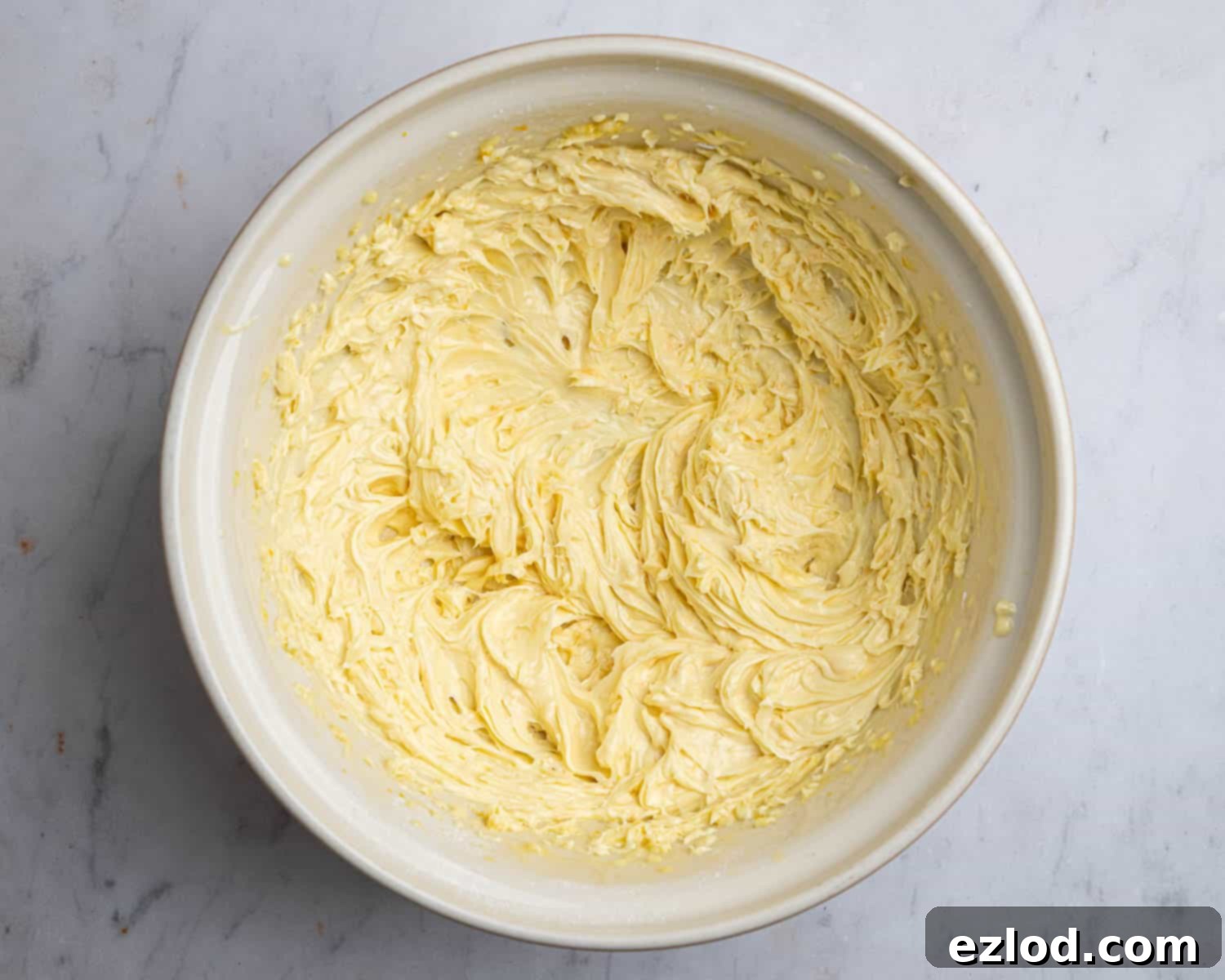
Step 2: Incorporate dry ingredients. Sift the plain flour and cornflour directly into the creamed butter mixture. Sifting is important to prevent lumps and further aerate the dry ingredients. Mix gently until all the ingredients are just combined and a soft, pliable dough forms. Be careful not to overmix, as this can develop the gluten in the flour and result in tougher biscuits.
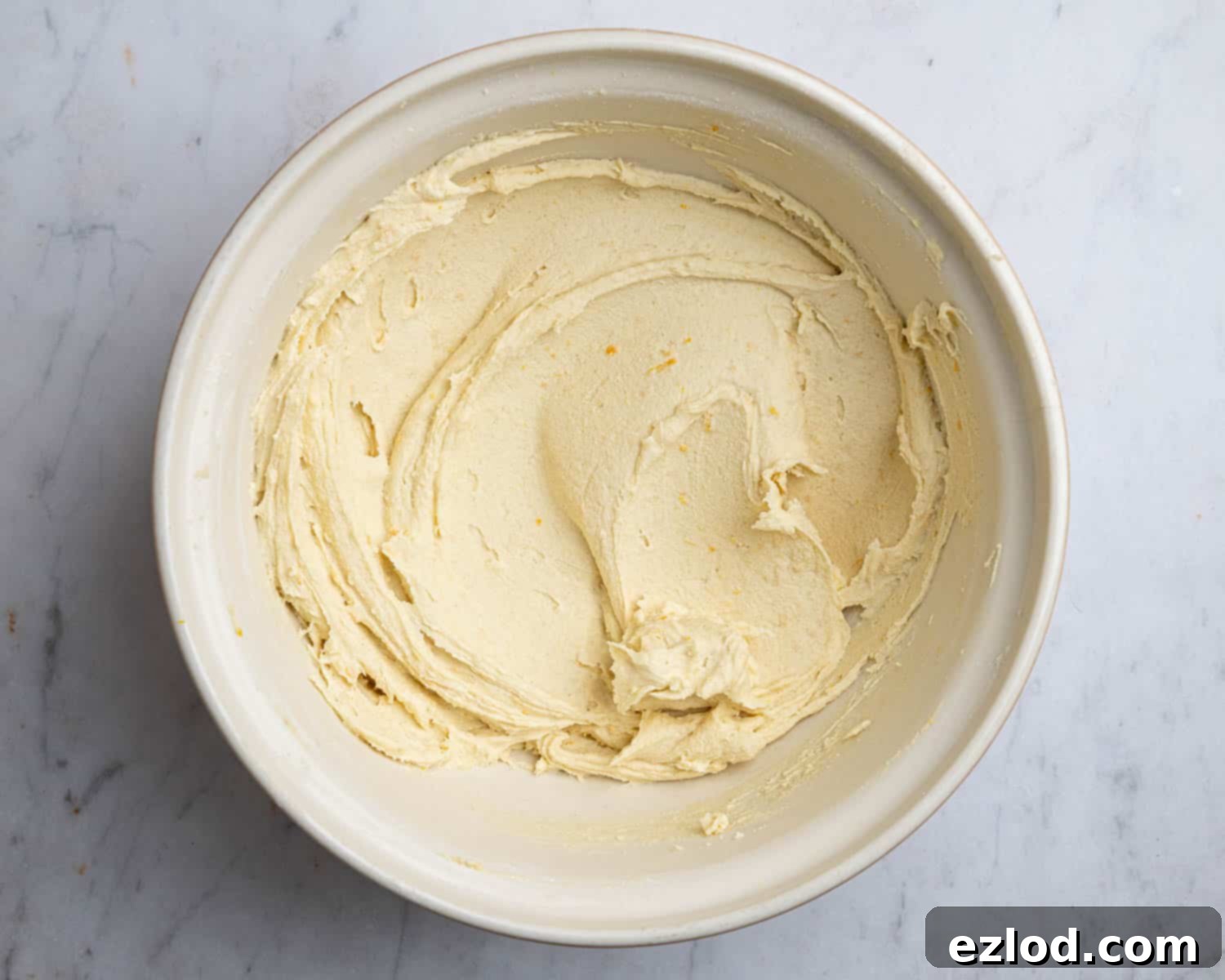
Step 3: Prepare for piping. Carefully transfer the prepared dough into a piping bag. For best results and the classic Viennese finger shape, ensure your piping bag is fitted with a large open star nozzle. This will help create those beautiful fluted edges.
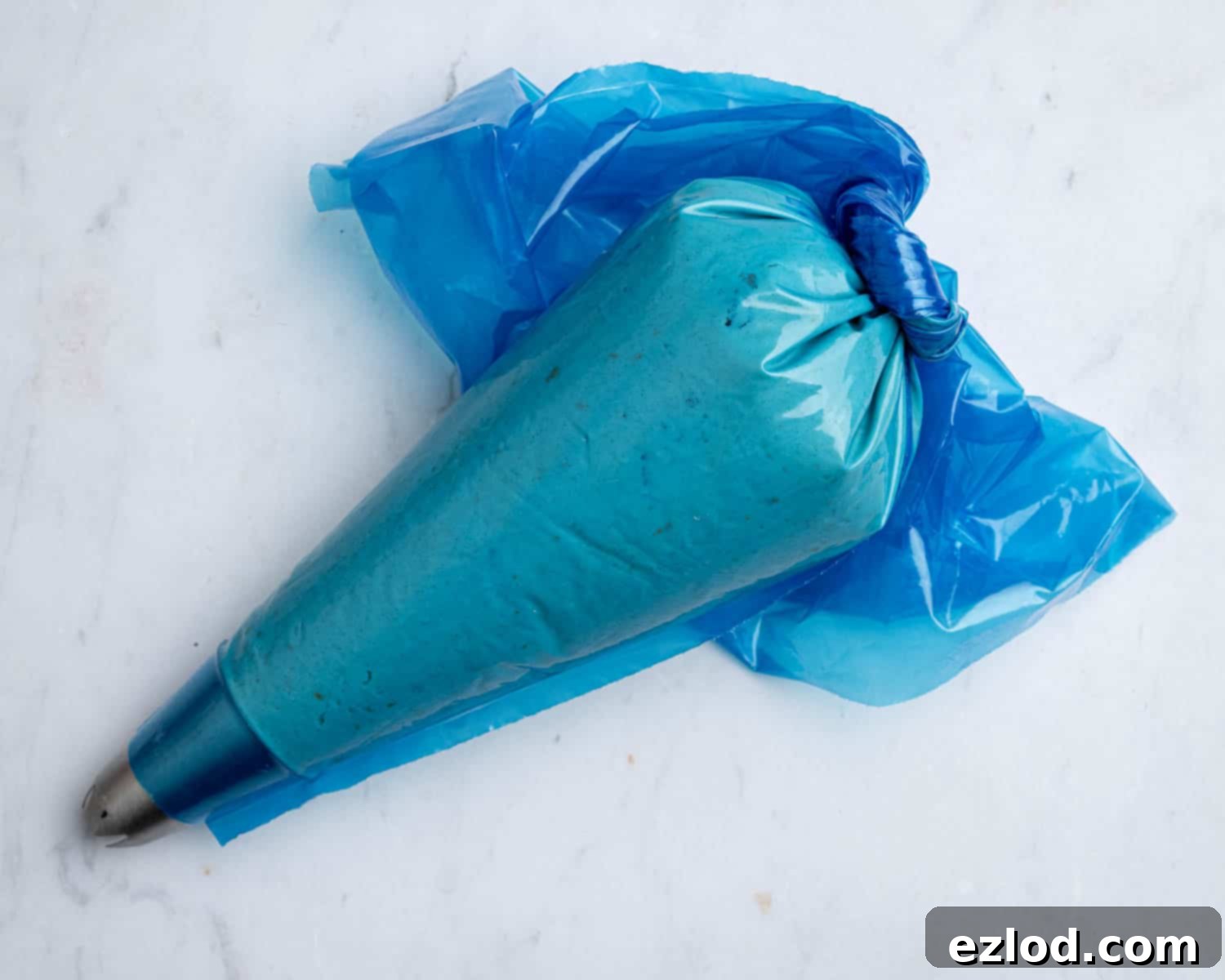
Step 4: Pipe the biscuits. Pipe even strips of dough onto baking sheets that have been lined with baking paper. Remember to leave ample space between each biscuit, as they will spread slightly during baking. Once piped, transfer the baking sheets to the freezer for about 15 minutes. This crucial chilling step helps the biscuits hold their shape better in the oven, preventing excessive spreading and ensuring crisp edges.
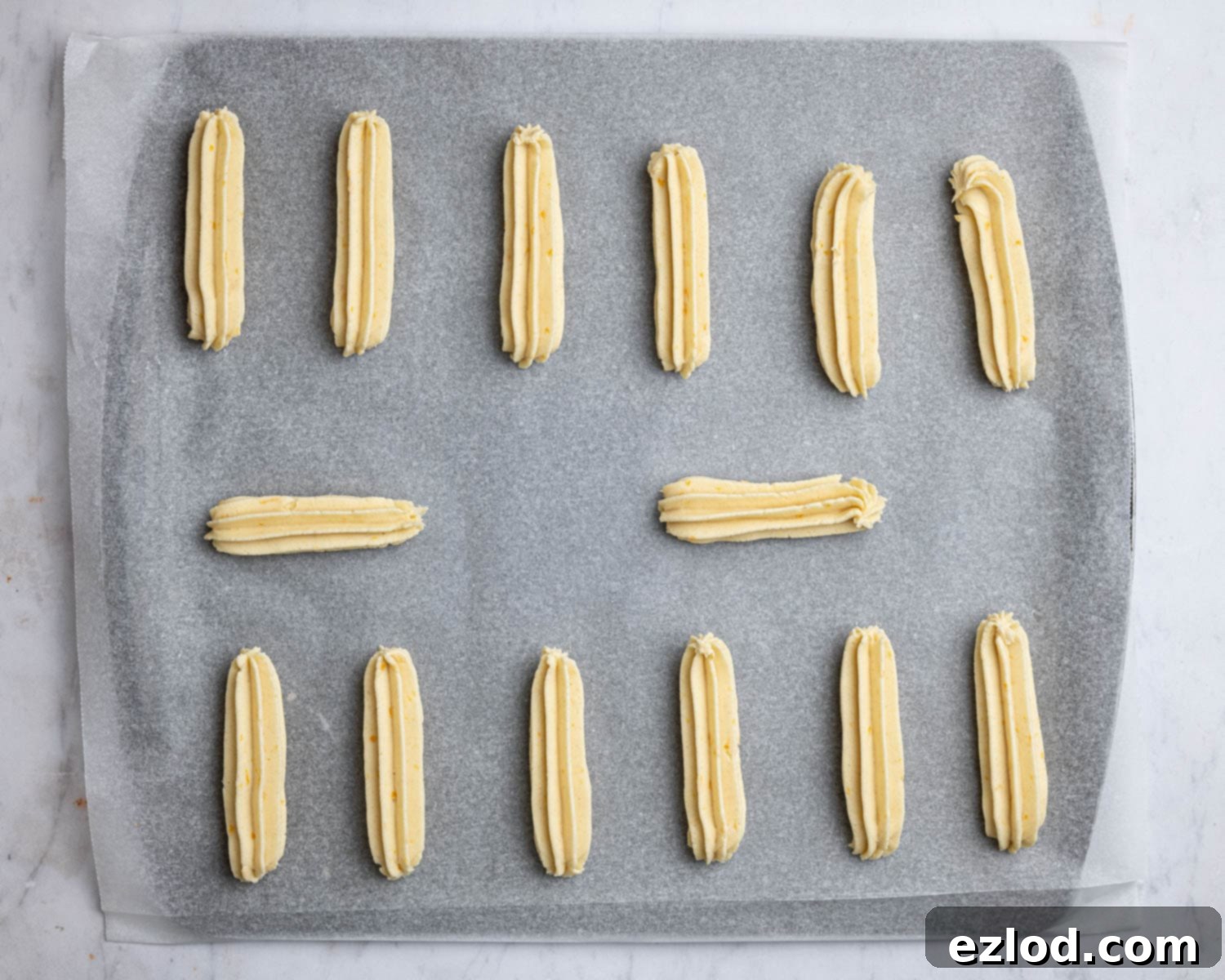
Step 5: Bake to golden perfection. Bake the biscuits in a preheated oven for 12-15 minutes, or until they turn a beautiful pale golden colour around the edges. Keep a close eye on them, as Viennese fingers can brown quickly. Once baked, allow them to cool on the baking sheet for about 5 minutes. They will be very delicate at this stage and prone to breaking. After the initial cooling, carefully transfer them to a wire rack to cool completely, which will help them firm up.
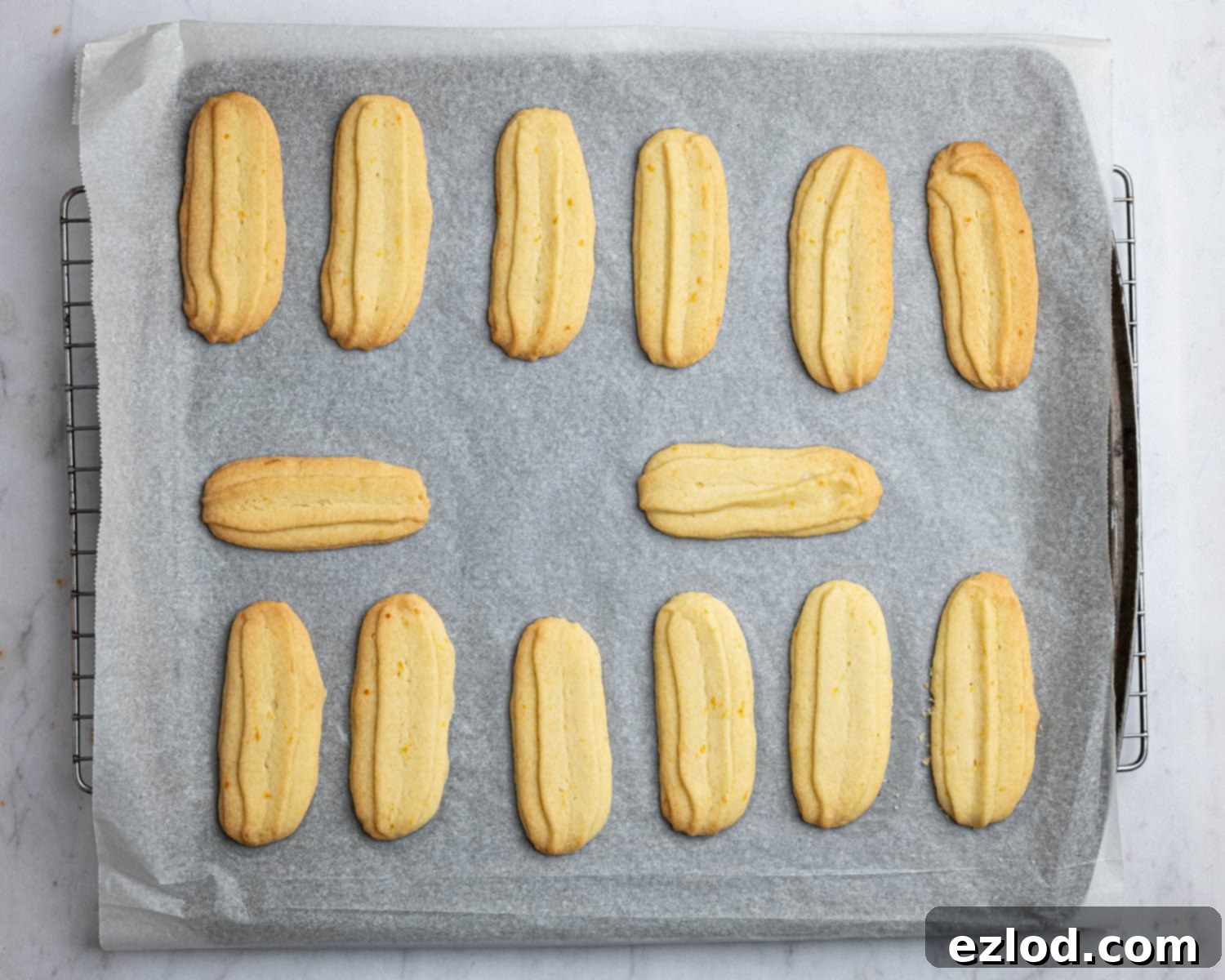
Step 6: Dip in chocolate. Once the biscuits are completely cooled, it’s time for the chocolate coating. Melt your chosen dark chocolate using a double boiler method (a heatproof bowl set over a pan of simmering water) or in short bursts in the microwave, stirring frequently until smooth. Transfer the melted chocolate to a narrow, deep container, such as a mug, as this will make dipping the biscuits much easier and less messy. Dip either end of each cooled biscuit into the melted chocolate, allowing any excess to drip back into the mug. Place the chocolate-dipped biscuits onto sheets of baking paper and let them set completely before carefully peeling them off and enjoying.
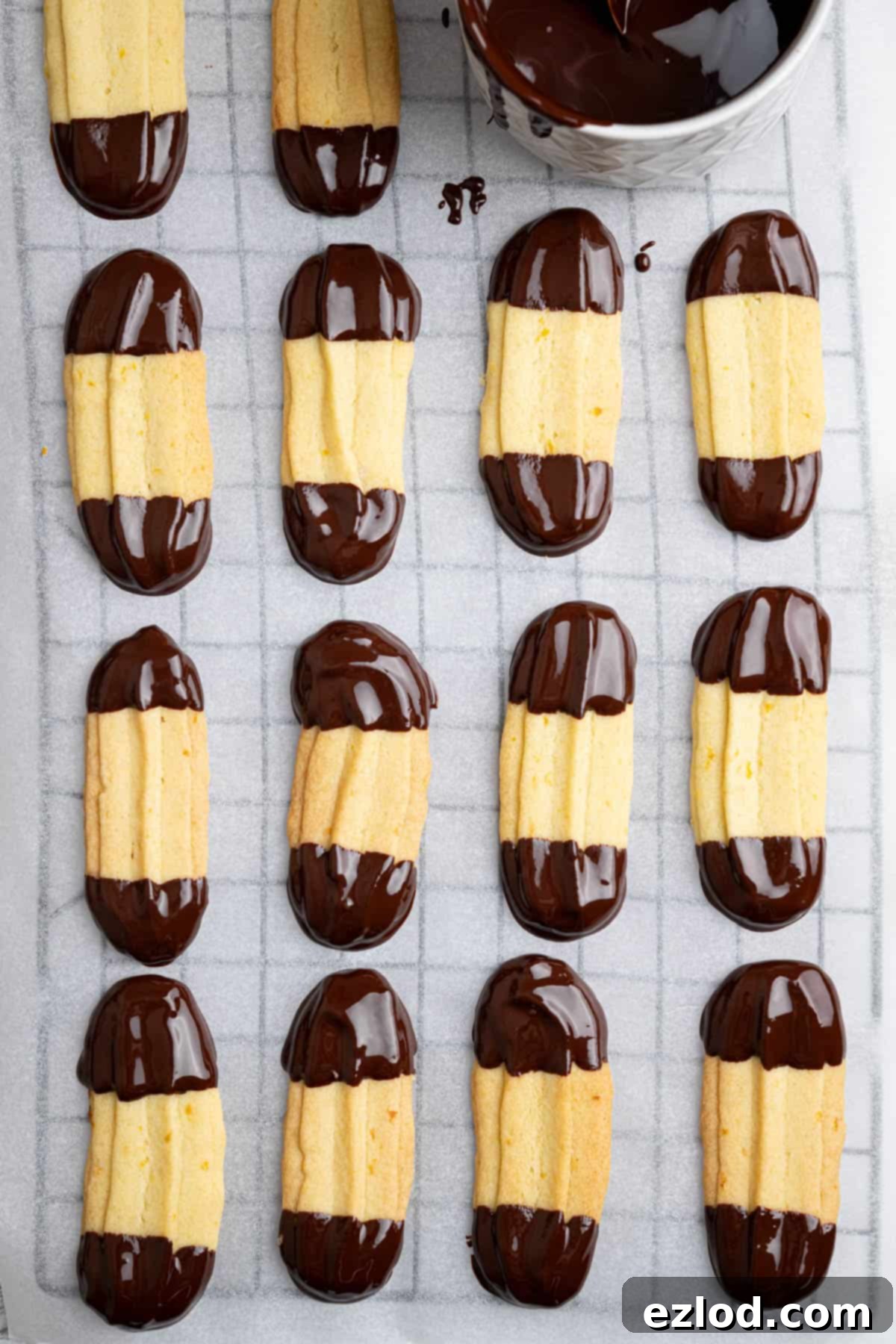
Expert Tips for Flawless Vegan Viennese Fingers
To ensure your vegan chocolate orange Viennese fingers turn out perfectly every time, keep these invaluable tips in mind:
- Precision with Measurements: As is the golden rule with all baking, I cannot stress enough the importance of using metric measurements with a digital kitchen scale rather than relying on cup conversions. Volume-based cup measurements are notoriously inaccurate and can lead to inconsistent results. A digital scale ensures precise ingredient ratios, which is crucial for the delicate balance needed in Viennese biscuit dough, yielding far better and more consistent outcomes, not to mention a cleaner kitchen!
- Achieving Soft Butter: Your vegan block butter needs to be exceptionally soft – almost at a spreadable consistency, but not melted – before you begin creaming. Take it out of the fridge at least two hours before you plan to start baking. If your butter is too cold or firm, your dough will be too stiff to pipe smoothly, resulting in frustration and potentially broken piping bags. If you find your dough is too stiff, gently warm the piping bag in your hands for a few moments, or place the mixing bowl in a warm spot (like near a gently warming oven) for a couple of minutes to soften it slightly, then give it another quick mix. Avoid adding any liquid, as this will throw off the delicate balance of the recipe.
- Piping Essentials: For those signature Viennese shapes, a large open star piping nozzle and a sturdy piping bag are indispensable. These will help you create beautiful, consistent fluted fingers or other decorative shapes.
- Adjusting Thickness: These biscuits are designed to be quite delicate and thin. If you prefer a slightly thicker, more substantial biscuit, you can experiment by adding ½ teaspoon of baking powder to the dry ingredients. This will give them a little more lift and volume without drastically changing the texture.
- Creative Shapes: Don’t feel limited to piping simple finger shapes! Viennese dough is wonderfully versatile. You can pipe elegant swirls, ‘S’ shapes, squiggles, or even small rosettes. Get creative and enjoy the decorative aspect of these biscuits.
- Tempering Chocolate for Shine: If you desire a professional-looking chocolate coating that boasts a beautiful shine and a satisfying snap, without any unsightly streaks, then you will need to temper your dark chocolate. While not strictly necessary for taste, it significantly enhances the presentation and texture of the chocolate.
- Classic Viennese Option: If the delightful combination of chocolate and orange isn’t quite what you’re craving, you can easily adapt this recipe to make classic vegan Viennese fingers. Simply omit the orange zest and orange extract from the recipe.
Frequently Asked Questions (FAQ’s):
Once fully cooled and the chocolate is set, store your delicious vegan Viennese fingers in an airtight container at room temperature. They will maintain their freshness and delicate texture for up to two weeks, making them a fantastic make-ahead treat.
While I haven’t personally experimented with freezing these specific biscuits, I don’t see any reason why they wouldn’t freeze well. To freeze, place them in a single layer in an airtight freezer-safe container, ensuring they are well protected from freezer burn. They should keep beautifully for up to 3 months. When you’re ready to enjoy them, simply allow them to defrost naturally at room temperature before serving. This makes them perfect for preparing in advance for special occasions or having a stash of deliciousness on hand!
This is a common issue and almost always means your vegan butter wasn’t soft enough. As mentioned in the tips, the dough needs to be like a thick buttercream in consistency. Avoid adding liquid. Instead, try warming the piping bag gently in your hands for a few minutes, or briefly placing the mixing bowl in a slightly warm spot (not hot!) to soften the butter, then give it a quick mix again before piping. Patience is key here!
Absolutely! While I recommend 70% dark chocolate for a balanced richness, you can certainly experiment with other vegan chocolate varieties. Vegan milk chocolate would offer a sweeter, creamier coating, while a very dark (80%+) chocolate would provide a more intense, less sweet contrast. Ensure whatever chocolate you choose is certified vegan.
More Delicious Vegan Biscuit Recipes to Explore:
- Chocolate Viennese Whirls
- Vegan Lemon Sandwich Cookies
- Vegan Vanillekipferl
- Chunky Chocolate Pecan Cookies
- Vegan Chocolate Orange Shortbread
- Vegan Peanut Butter Cookies
- Vegan Oatmeal Raisin Cookies
- Pumpkin Spice Shortbread
- Vegan Cranberry Orange Shortbread
- Vegan Coconut Cookies
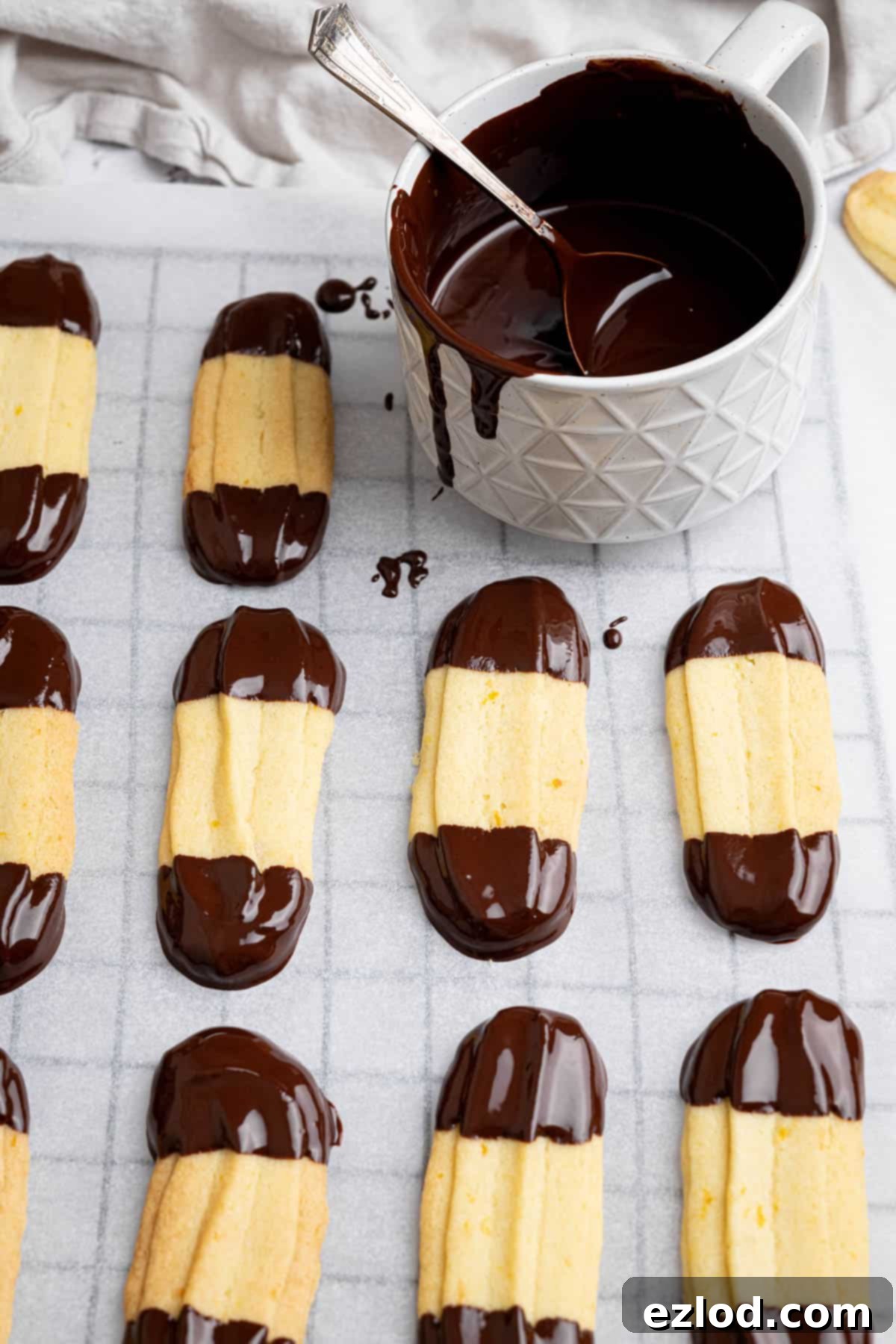
If you’ve tried this delightful recipe and loved it, please don’t hesitate to let me know how it went! Your feedback is incredibly valuable. Rate the recipe, leave a comment below, or share your creations by tagging @domestic_gothess on Instagram and using the hashtag #domesticgothess. Happy baking!
All images and content presented on Domestic Gothess are protected by copyright. Should you wish to share this recipe, kindly do so by utilising the provided share buttons. Please refrain from screenshotting or posting the recipe or its content in its entirety. Instead, include a direct link to this post for the complete recipe. Thank you for respecting our creative work.

Chocolate Orange Viennese Fingers (Vegan)
Course
Dessert
Cuisine
British
Keyword
biscuits, vegan, chocolate orange, viennese
Prep Time
30 minutes
Cook Time
12 minutes
Servings
28 biscuits
Author
Domestic Gothess
Ingredients
- 200 g (¾ cup + 1Tablespoon) vegan block butter very soft but not melted
- 75 g (¾ cup) icing (powdered) sugar
- finely grated zest of 1-2 oranges
- 1 teaspoon orange extract
- 1 teaspoon vanilla extract
- 200 g (1 + ⅔ cup) plain (all-purpose) flour
- 45 g (⅓ cup) cornflour (cornstarch)
- 200 g dark chocolate finely chopped
Instructions
-
Preheat your oven to 180°C/160℃ fan/350°F/gas mark 4. Prepare two baking sheets by lining them with baking paper, ensuring they are ready for your piped biscuits.
-
In a large mixing bowl, thoroughly whisk the very soft vegan block butter, icing sugar, finely grated orange zest, orange extract, and vanilla extract together. Continue whisking until the mixture becomes wonderfully smooth, light, and airy, indicating that sufficient air has been incorporated.
-
Sift the plain flour and cornflour directly into the butter mixture. Mix gently with a spatula or on a low speed until all the ingredients are just combined and a cohesive dough forms. The dough should be stiff enough to hold its shape but still malleable and pipeable, resembling a thick buttercream in consistency. Avoid overmixing to keep the biscuits tender.
-
Fit a large open star nozzle into a sturdy piping bag, then carefully spoon the prepared dough into the bag. Pipe uniform strips of dough onto your lined baking sheets, making sure to leave adequate space between each one as they will spread a little during baking. Once piped, place the entire trays into the freezer for 15 minutes. This chilling step is vital for helping the biscuits retain their intricate piped shape during baking.
-
Bake the chilled biscuits for 12-15 minutes, or until their edges turn a delicate pale golden colour. They should still be quite pale in the centre. Once baked, leave them to cool on the baking sheet for a crucial 5 minutes. They will be extremely delicate and prone to breaking if moved too soon. After this initial cooling, very carefully transfer them to a wire rack to cool completely and firm up.
-
Melt the finely chopped dark chocolate in a heatproof bowl set over a pan of simmering water (a double boiler), stirring until smooth. Alternatively, melt it in short bursts in the microwave, stirring well after each interval to prevent burning. Once melted and smooth, transfer the chocolate into a narrow but deep container, such as a tall mug. This will make it significantly easier to dip the biscuits cleanly and efficiently.
-
Take each completely cooled biscuit and dip either end into the melted chocolate. Allow any excess chocolate to drip back into the mug before placing the dipped biscuits onto clean sheets of baking paper. Let them sit until the chocolate has completely hardened. Once set, carefully peel them off the baking paper, and your exquisite vegan chocolate orange Viennese fingers are ready to be savoured!
Notes
- For more detailed tips, ingredient insights, and step-by-step photos, please refer to the main article above.
- As with all of my baking recipes, I strongly recommend using metric measurements with a digital scale instead of cup conversions. Cups are a notoriously inaccurate measuring system, and you will achieve much better, more consistent results using a scale. Plus, it’s often easier and less messy than using multiple measuring cups!
- It’s crucial for the vegan butter to be extremely soft (but not melted) when you start baking. Take it out of the fridge at least a couple of hours beforehand. If it’s too firm, your dough will be too stiff to pipe smoothly.
- If you find you are struggling to pipe the dough, it typically means the dough is too cold, NOT that it requires more liquid. If it’s too stiff, gently warm the bowl in a warm spot for a few minutes, or use the warmth of your hands to warm up the piping bag. This will soften the butter just enough to make it pipeable.

